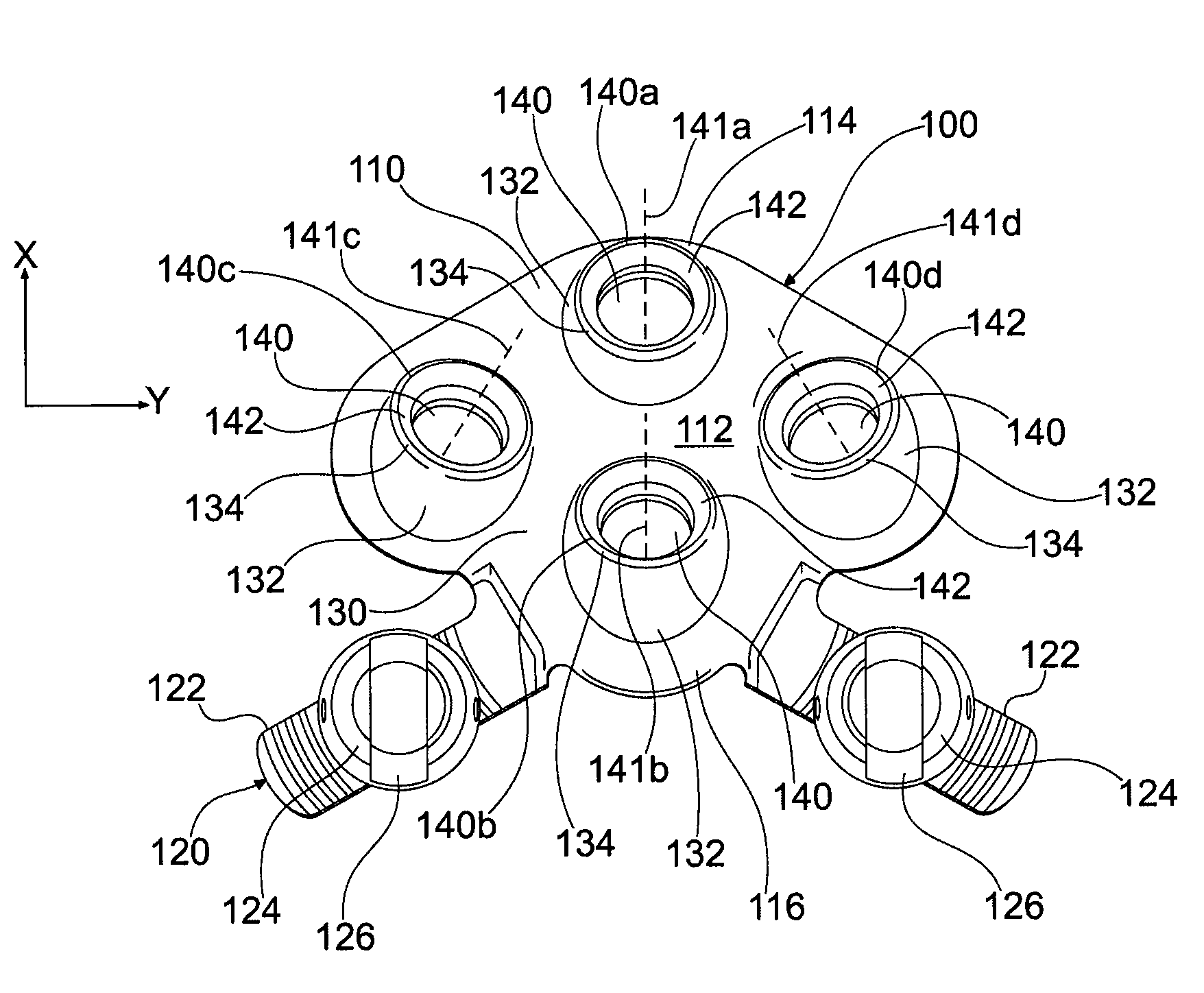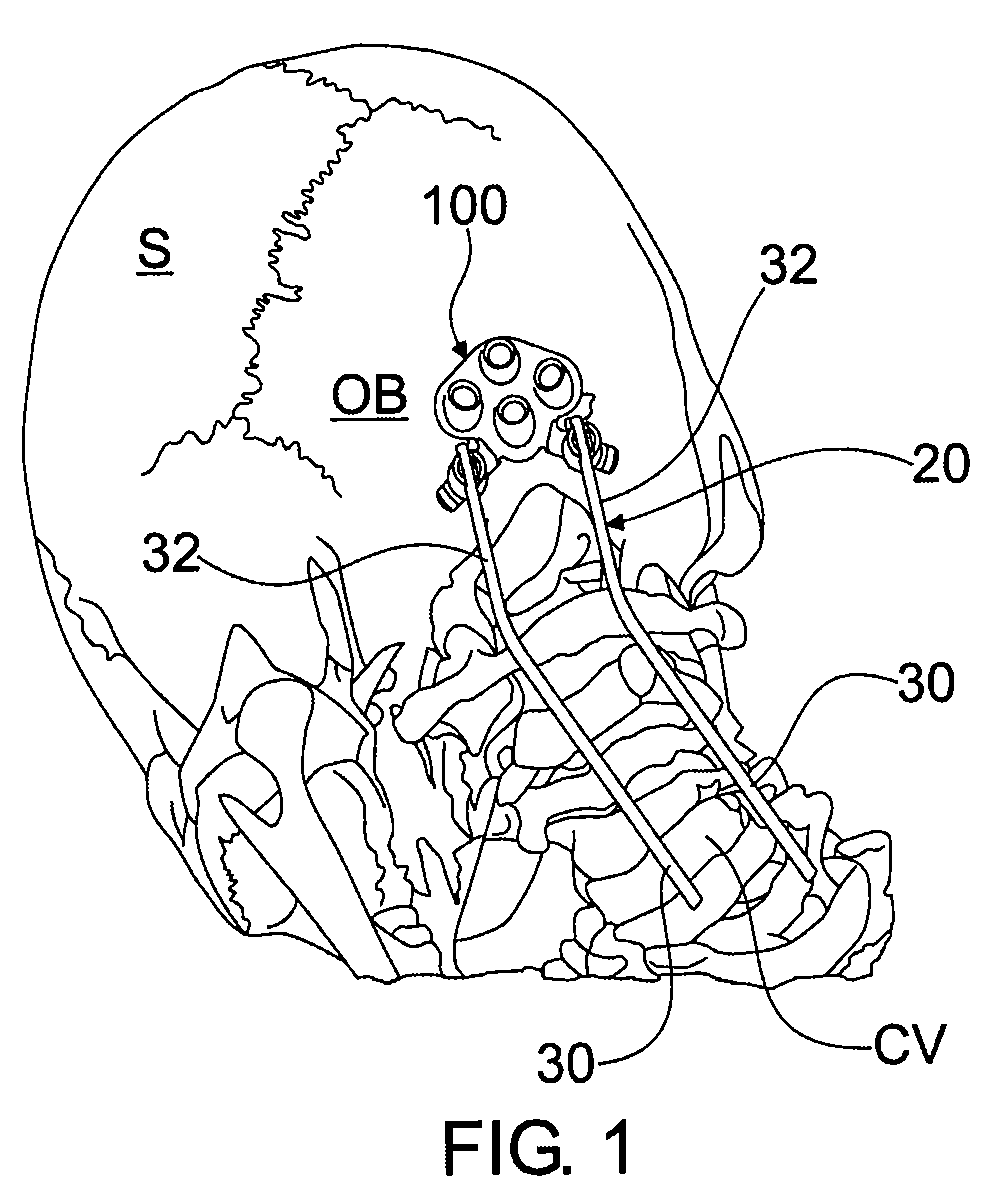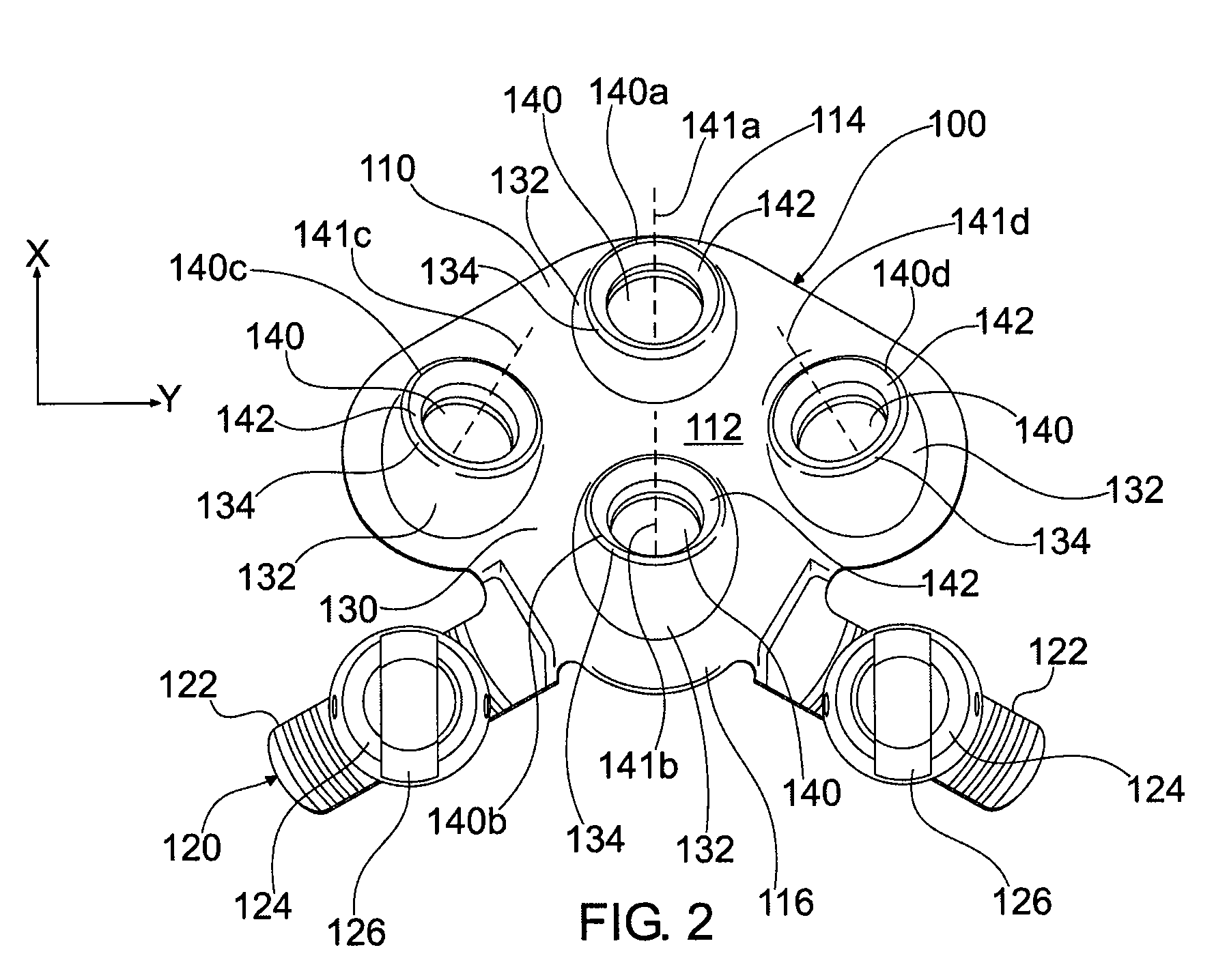Minimal access occipital plate
a technology of occipital bone plate and small access, which is applied in the field of cervical spine apparatus and methods, can solve the problems of requiring a significant amount of force to penetrate the dense cortical bone, affecting the treatment effect, and affecting the quality of life of patients,
- Summary
- Abstract
- Description
- Claims
- Application Information
AI Technical Summary
Problems solved by technology
Method used
Image
Examples
Embodiment Construction
[0018]Although the invention is illustrated and described herein with reference to specific embodiments, the invention is not intended to be limited to the details shown. Rather, various modifications may be made in the details within the scope and range of equivalents of the claims and without departing from the invention.
[0019]Occipital bone plates in accordance with the present invention provide a mechanism for stabilizing the base of the skull and cervical spine, while allowing surgical instrumentation to be held away from the cervical spine. In addition, bone plates in accordance with the invention provide a mechanism that reduces the size of incisions. Moreover, bone plates in accordance with the invention provide a stronger engagement between the occiput bone and bone screws. These combined benefits are achieved by selective angulation of screw holes in the bone plate. By angulating screw holes with respect to a reference plane, such as the plate's base portion, the screw hol...
PUM
 Login to View More
Login to View More Abstract
Description
Claims
Application Information
 Login to View More
Login to View More - R&D
- Intellectual Property
- Life Sciences
- Materials
- Tech Scout
- Unparalleled Data Quality
- Higher Quality Content
- 60% Fewer Hallucinations
Browse by: Latest US Patents, China's latest patents, Technical Efficacy Thesaurus, Application Domain, Technology Topic, Popular Technical Reports.
© 2025 PatSnap. All rights reserved.Legal|Privacy policy|Modern Slavery Act Transparency Statement|Sitemap|About US| Contact US: help@patsnap.com



